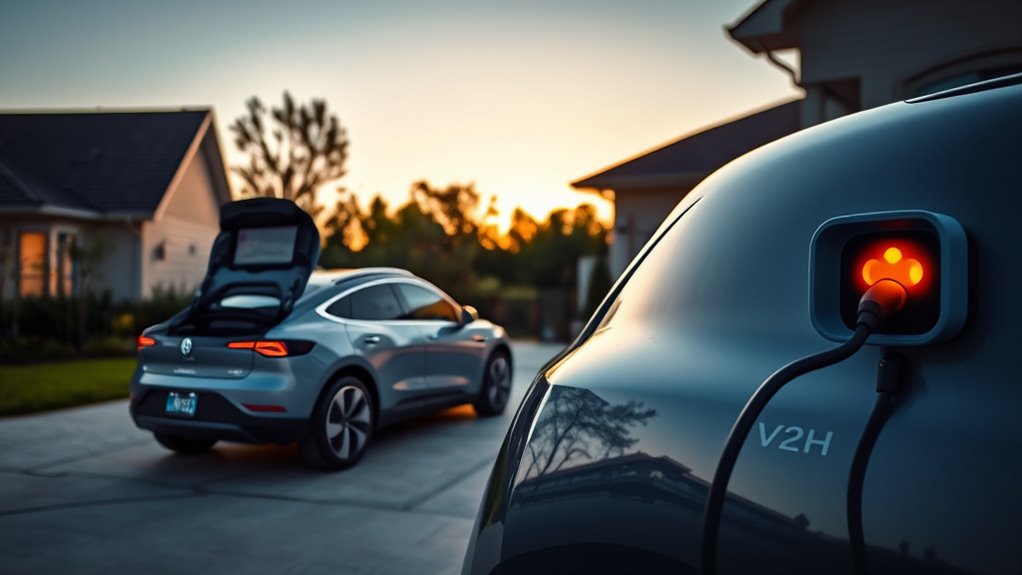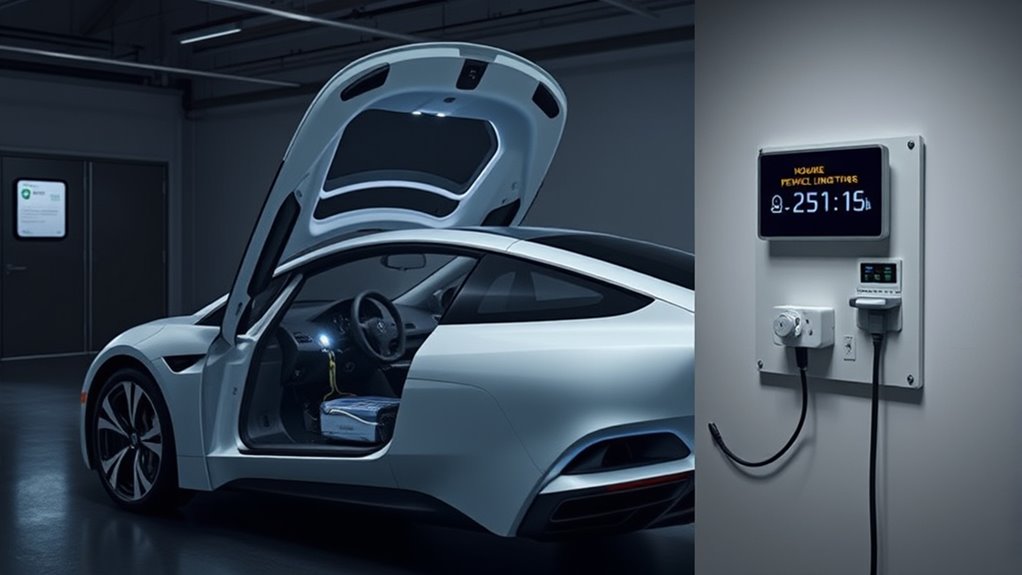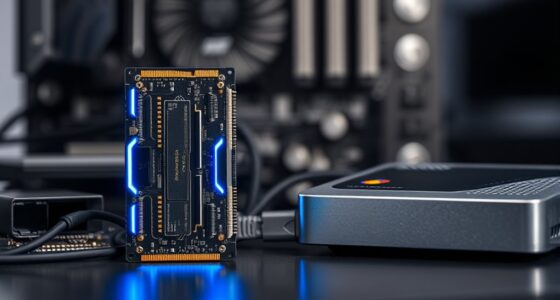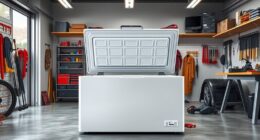Vehicle-to-Home Power (V2H) lets you use your electric vehicle’s battery to supply power to your home during outages or high-demand times. It connects your EV seamlessly to your home’s electrical system, allowing stored energy to power essential appliances like lights, refrigeration, and medical devices. This setup improves energy independence and supports renewable sources like solar. To understand how this technology works and its benefits, keep exploring the details further.
Key Takeaways
- V2H allows electric vehicles to supply power to a home during outages or peak times.
- It connects EV batteries seamlessly with home electrical systems for safe energy transfer.
- V2H can prioritize essential appliances, providing backup power during emergencies.
- It promotes energy independence by storing excess renewable energy and reducing grid reliance.
- Advanced management systems ensure safe, efficient, and battery-friendly energy flow between vehicle and home.

Vehicle-to-Home (V2H) technology allows your electric vehicle to serve as a backup power source during outages or peak energy demand. This innovative system leverages your EV’s battery integration to provide electricity directly to your home, giving you greater control over your energy use and enhancing your grid independence. When the grid is overloaded or experiencing a failure, V2H systems can automatically draw power from your vehicle’s battery, ensuring essential appliances stay running without interruption. This reduces reliance on traditional generators or the grid itself, making your home more resilient and self-sufficient.
V2H lets your EV power your home during outages, boosting independence and resilience.
The core advantage of V2H is its ability to seamlessly integrate your EV’s battery with your home’s electrical system. As you drive, your vehicle’s battery accumulates energy, but with V2H, you can also draw from that stored power during critical moments. This battery integration means your EV doesn’t just serve as transportation but also as a portable power bank. When properly configured, the system can automatically prioritize which appliances need power during outages, such as refrigerators, lights, or medical equipment, helping you maintain comfort and safety. This integration requires specialized hardware and software that manage the flow of electricity between your vehicle and your home, ensuring safety and efficiency.
Additionally, V2H enhances your grid independence by allowing you to generate and store your own energy. During times of low demand or when renewable sources like solar panels are producing excess power, the system can store that energy in your EV’s battery. When demand spikes or the grid becomes unstable, your vehicle becomes a decentralized power source, reducing your dependence on utility providers. Over time, this capability can lead to savings on energy bills and a more sustainable lifestyle, as you leverage your vehicle’s battery to balance your energy consumption. Furthermore, whole-home backup power solutions can be integrated with V2H to maximize resilience during extended outages.
The convenience of V2H lies in its smart management systems, which coordinate charging, discharging, and grid interactions. These systems monitor energy needs in real time, ensuring your vehicle’s battery is ready when you need it for driving, while also providing backup power when required. They help optimize battery life and performance, so you don’t have to worry about unnecessary wear. As technology advances, the integration becomes more intuitive, making it easier for you to manage your energy resources and achieve greater independence from the grid.
Frequently Asked Questions
Can V2H Systems Power the Entire House During an Outage?
Yes, V2H systems can power your entire house during an outage, especially if integrated with solar panels for energy storage and generation. They offer grid independence by providing backup power directly from your vehicle’s battery. Keep in mind, the capacity depends on your vehicle’s battery size and energy needs. Proper solar integration guarantees a reliable, sustainable power source, making your home more resilient during outages.
What Safety Measures Are Included in V2H Technology?
Think of V2H safety measures as a fortress protecting your home. You’re equipped with advanced battery safety features that prevent overheating, overcharging, and short circuits. Electrical safeguards, like automatic shutoffs and grounding, ensure power flows safely and securely. These layers of protection work together, keeping you safe while harnessing your vehicle’s power, so you can rest easy knowing your home’s energy is managed with precision and care.
How Long Can a V2H System Supply Power?
A V2H system can typically supply power for several days, depending on your vehicle’s battery capacity and your household’s energy consumption. If your battery is large and your energy use is moderate, it might last up to 48-72 hours during an outage. However, higher energy consumption or smaller batteries will shorten that period. Monitoring your battery capacity and adjusting your energy consumption helps maximize backup power duration.
Are V2h-Compatible Vehicles Available Worldwide?
Yes, V2H-compatible vehicles are available worldwide, but their vehicle compatibility varies by region and manufacturer. Currently, some automakers in North America, Europe, and Asia offer models with V2H capabilities, yet availability might be limited depending on local infrastructure and regulations. To guarantee you can use V2H systems, check if your vehicle model supports it and confirm global availability in your area before making a purchase.
What Maintenance Is Required for V2H Systems?
You need to regularly check your V2H system’s battery longevity and performance, much like maintaining a car’s engine. Keep software updates current to guarantee peak functionality and security. Monitor connections and charging components for wear, and schedule periodic inspections to catch potential issues early. By staying proactive with maintenance, you’ll extend your system’s lifespan, maximize efficiency, and enjoy reliable power when you need it most.
Conclusion
Now that you understand the basics of vehicle-to-home power, imagine the possibilities when your vehicle becomes your backup energy source. What if, one day, your car could seamlessly power your entire home during an outage? The future of energy independence is closer than you think. Stay tuned—big changes are on the horizon, and you won’t want to miss what’s coming next. Are you ready to take the leap into this exciting new world?









